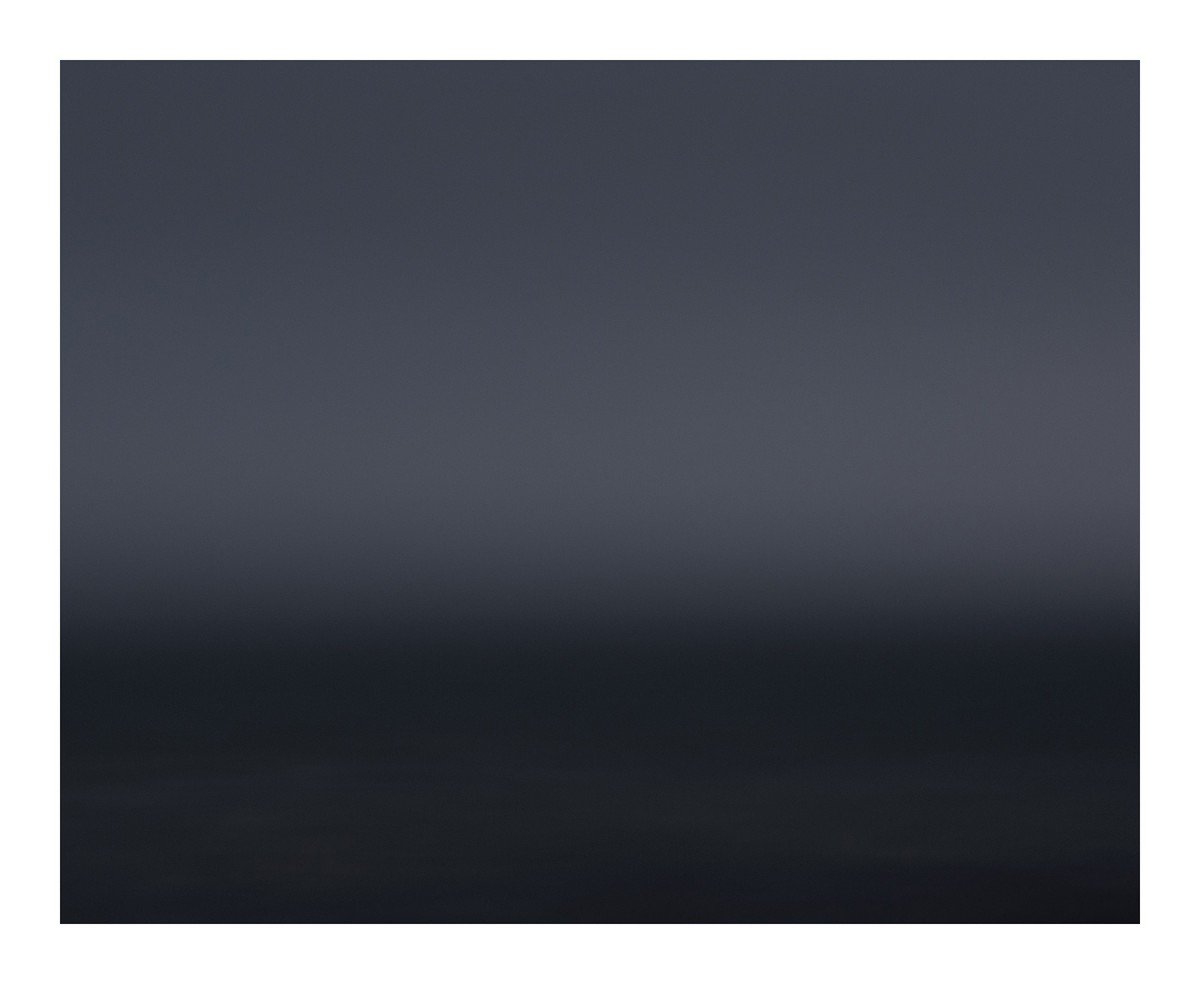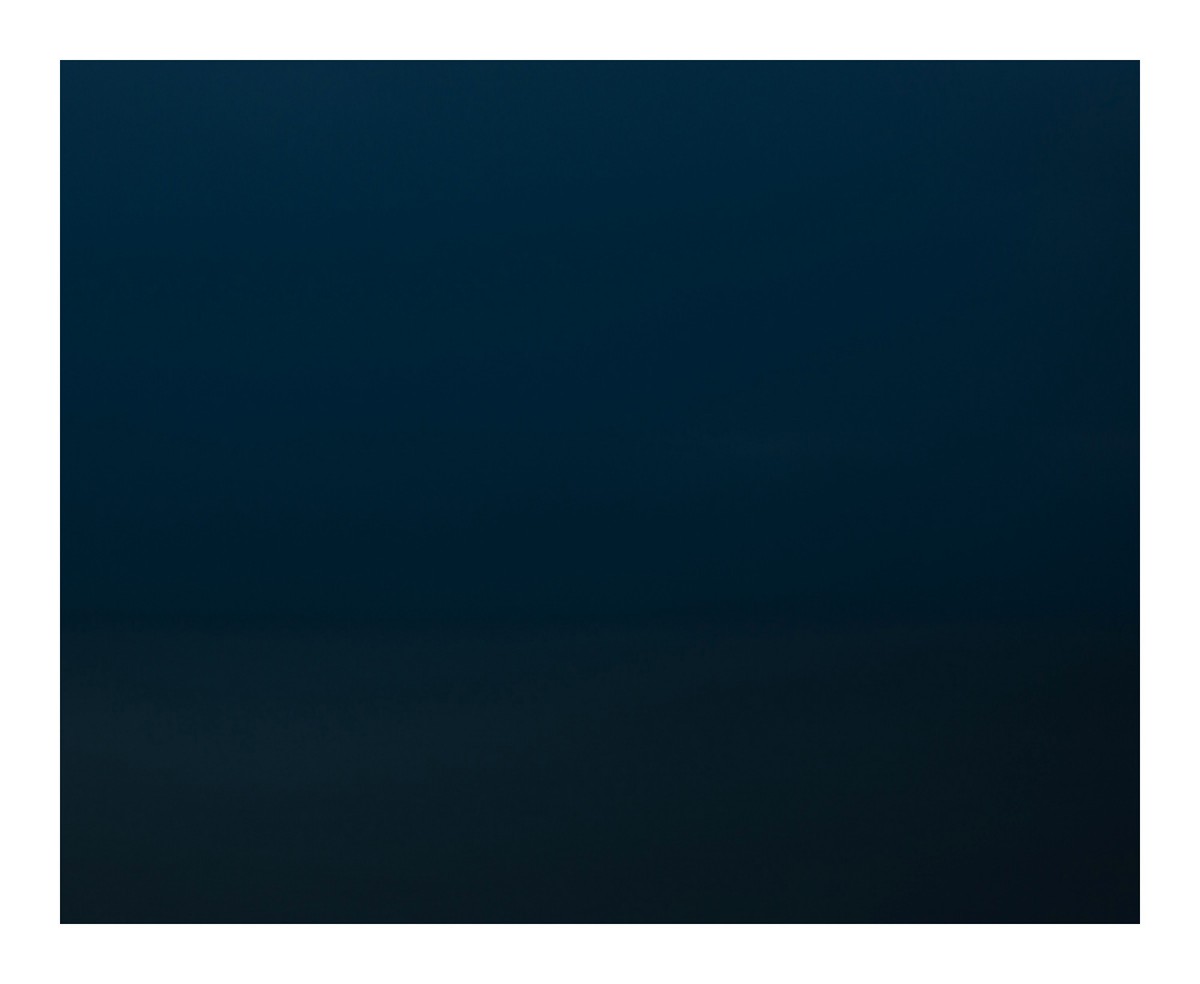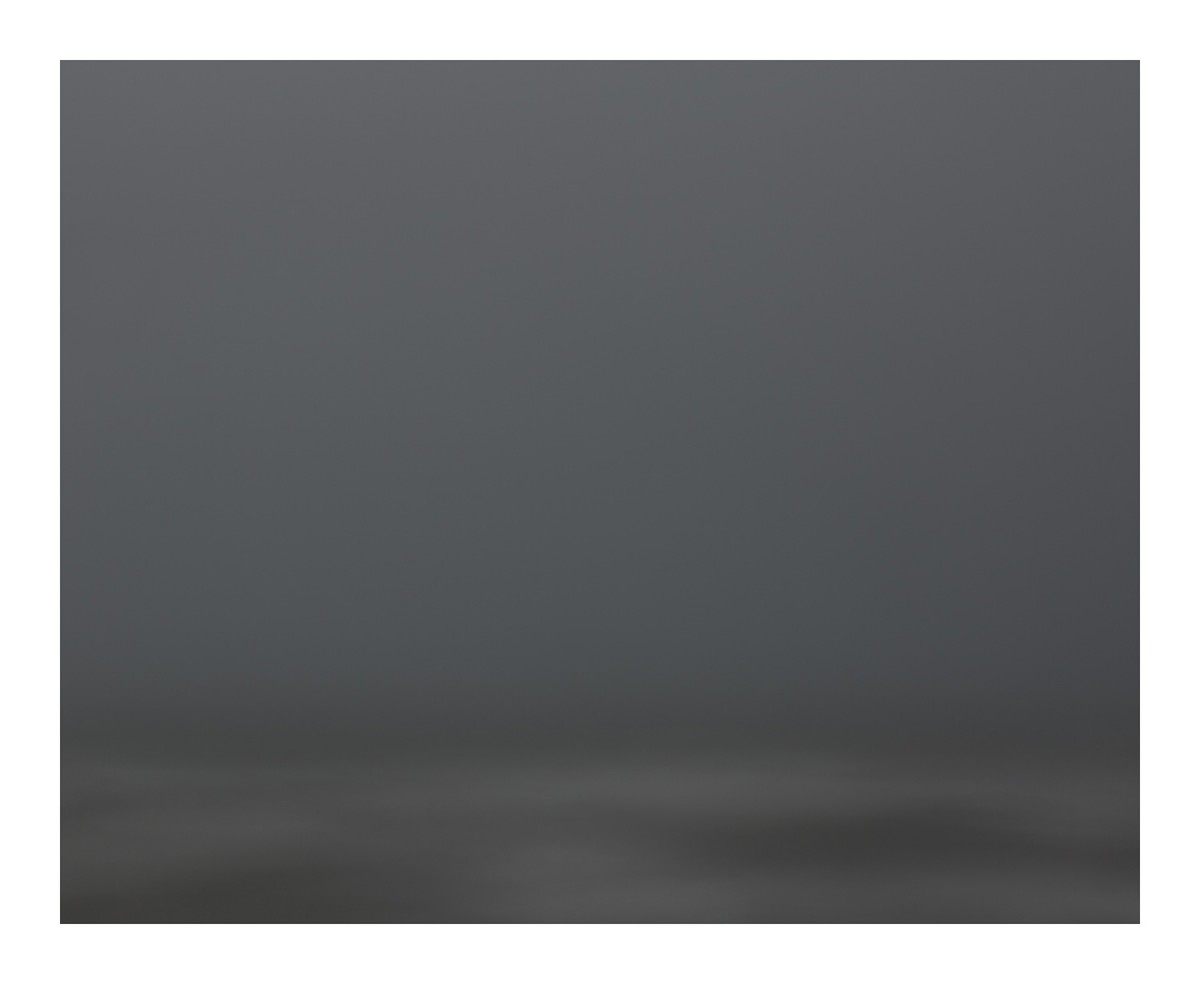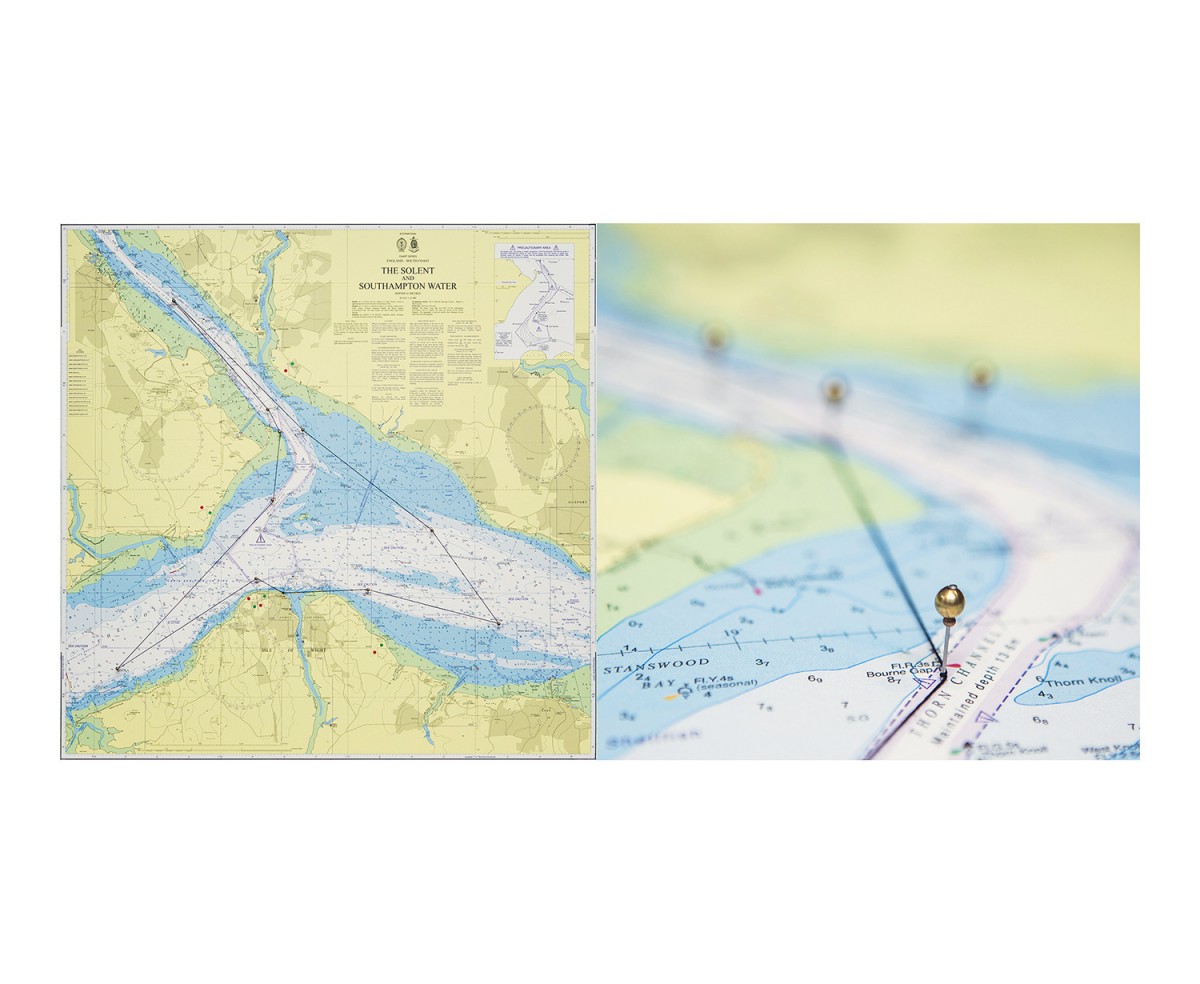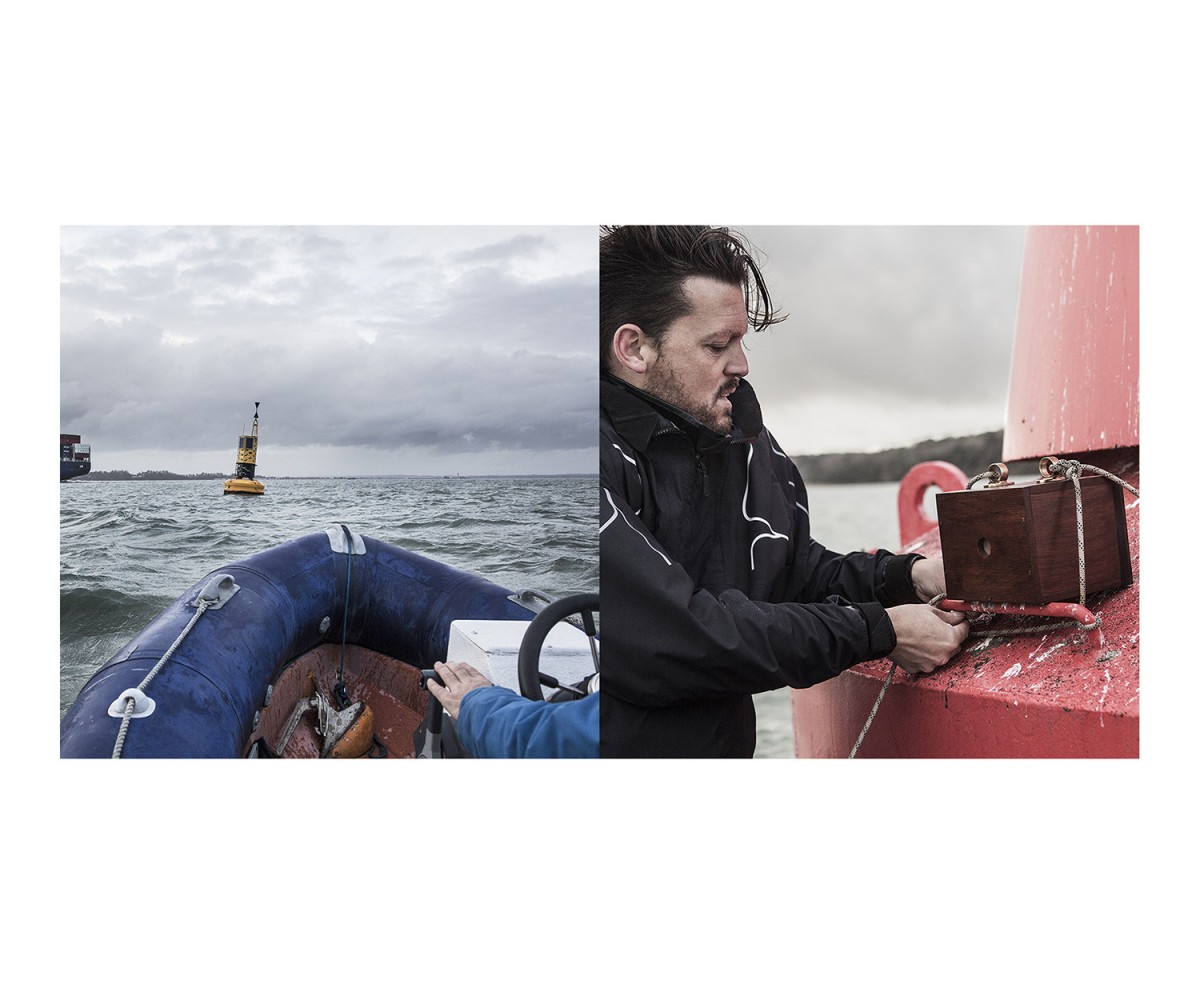Selected as a Photoworks Award winner, 2016 University of Brighton MA Photography graduate Richard Boll plays with time and chance in these long exposure seascapes.
Six Degrees of Freedom is a response to looking at the late seascapes of the painter J.M.W. Turner, and to the challenges photography faces in expressively rendering the sea.
The project involved attaching a pinhole camera to navigation buoys in the Solent, and making exposures ranging from four minutes to an hour. The channel flows around Cowes, the town of my upbringing, and an area in which Turner produced several seascapes. It is famous for the strength of its tides and currents.
The project creates an interplay between control and chance. The aspects of control include the selection of the buoy, the choice of the time of day to make the images and the duration of the exposures. There is chance, however, in is the unpredictable movement of the buoy, as dictated by the movement of the sea. The resulting photographs are renderings of the sea and sky, directly produced by the six directions of movement that affect a buoyant object. The movement of the sea during the exposures helps to generate a deep ambiguity in the images.
The resultant photographs echo the diffuse and indistinct visual effects found in the paintings of such artists as Turner, Caspar David Friederich and Mark Rothko. This is part of the language of the sublime referred to by Immanuel Kant in his Critique of Judgement of 1790. He distinguished between the differences of the Beautiful and the Sublime, noting that beauty “is connected with the form of the object, having boundaries”, while the sublime “is to be found in a formless object, insofar as limitlessness is represented in it”.
See here for more of Richard’s work.


